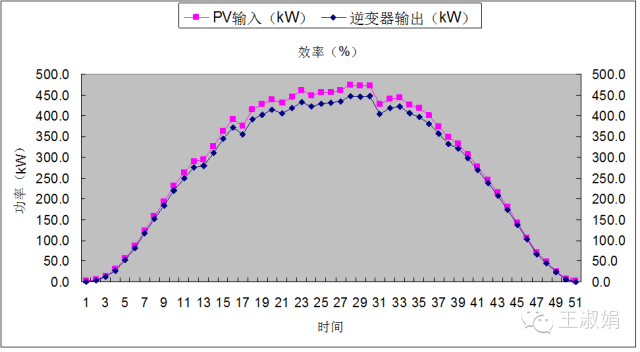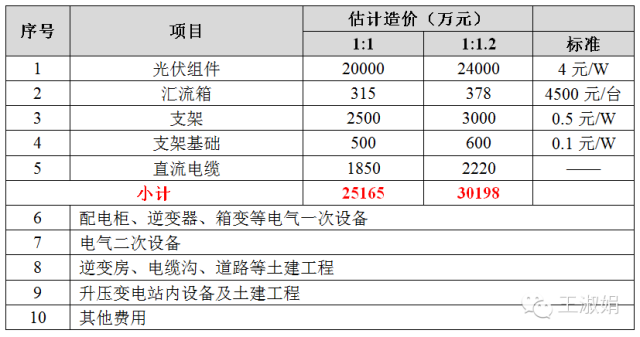Have you ever heard that PV modules: Inverter = 1.2:1 Perhaps the best ratio for economic efficiency?
I. Introduction
The first two days for the State Power Qinghai Branch to do a Golmud technological transformation program. The design plan is that the total capacity of a PV module is 1019.3kW. After connecting two 500kW inverters, one 1000kVA box transformer is connected.
Owners questioned: 1019.3kW has exceeded 1000kW, and our solar energy resources here are very good. We often use superpowers, and we have to use two 630 kW inverters and one 1250kVA box transformer.
Because of a photovoltaic module composed of 4000 units of a power generating unit, unless a 250-watt module is used, the capacity of a power-generating unit is generally slightly larger or smaller than 1000 kW. It is impossible for it to be exactly 1,000 kW, and the engineering design will generally be slightly Beyond that.
Therefore, this question raised by the owners is actually asked in my work.
In fact, photovoltaic modules: inverter = 1:1 is the original conventional design, and now everyone is more in discussion of photovoltaic modules: inverter = 1.2:1 is more appropriate.
We discuss this issue on two levels.
Second, whether the capacity of the PV module is slightly larger?
First of all, first answer the owner's question, that is, whether the 1019.3kW PV modules can connect two 500kW inverters and one 1000kVA box transformer?
The following figure shows the output curve of a 1MW power unit on May 19 in Gansu Province, which is one of the best resources in China. (PPP quoted from Teacher Wang Sicheng). The unit in the figure is W.

Fig. 1 Output of 1MW photovoltaic power unit in different operating modes in Wuwei, Gansu Province
It can be seen that for the fixed-type project, 0.8MW is the highest at 1MW, and the time to reach 0.8MW is only about 2 hours.
For the stationary type, even in the regions with the best solar energy resources, PV modules can really receive more than 1000W/m2 of irradiance, and the time is about 1~2 hours before and after 1pm. At this point, the PV module can achieve full emission, and most of the time, due to low irradiance, the output power of PV modules is much lower than the installed capacity (the yellow line in the figure).
But even if the PV modules are full, there will be reductions to the inverter. Still, I quoted a picture of Wang Scheng teacher PPT.

Figure 2 Diagram of PV power plant PR loss
From this figure we can see that there is a lot of loss in output from the PV modules to the inverters and box changes. After the box was changed, there was only one AC loss.
Assume that the PR of the entire power station is 84% ​​(it is already considered relatively high, and the power station is difficult to reach in general). Considering 1% of the AC line loss, the system efficiency before box change will be reduced by about 15%. In other words, 85% of the output of PV modules can reach the box change. This explains why the maximum output of the 1MW fixed type in Fig. 1 is only 0.82MW.
Therefore, even when the solar resource conditions are good and the PV modules are fully charged, the PV module output power of 1019.3 kW is approximately 900 kW (88%) to the inverter, and the box voltage is approximately 866 kW (85%). The capacity of the existing two 500kW inverters and 1000kVA box transformers can meet the requirements.
It can be seen from Figure 1 that the power generation time is from 9 o'clock to 17 o'clock, about 8 hours, and the time to reach 0.8MW is only 25%. Therefore, if the PV module: inverter = 1:1, the inverter capacity is basically a huge waste.
Through the above analysis, we can get the following conclusions: 1) The capacity of PV modules is slightly greater than that of inverters. 2) The inverter, box change and other equipment, most of the time is no way to achieve full load operation!
Third, photovoltaic modules: inverter = 1.2:1 is appropriate?
Second, to analyze the problem of the best ratio.
The following figure shows a PV module on September 13 in Qinghai (except Tibet, where resources are best): Inverter ratio is 1:1 and 1.2:1 respectively, PV module and inverter output power (picture PPT from Teacher Wang Sicheng).

Figure 3 Photovoltaic Module: Power Output at Inverter = 1:1

Figure 4 Photovoltaic modules: power output at inverter = 1.2:1
Comparing Fig. 3 with Fig. 4, it can be seen that when the PV module: inverter = 1.2:1, a certain proportion of light will be generated, but the utilization efficiency of the inverter and the box will increase.
Which is more cost-effective? Let's count it.
For the sake of clarity, first take a 50MWp photovoltaic power station (building a 110kV booster station) as an example to look at the composition of PV power plant investment.
I roughly classified the investment in photovoltaic power plants into 10 items. When PV modules: Inverter = 1.2:1, the cost of the first five items will increase, and the last five items will remain unchanged.

As can be seen from the above table, after the increase in the proportion, the total cost has increased by 50.33 million yuan.
On the other hand, the 50MW photovoltaic power station has an overall efficiency of 80%, an equivalent utilization hour of 1800 in the first year, and an annual power generation capacity of 72GWh.
If a single PV module is increased by 20%, the 60MW PV power plant will have an overall efficiency of 80%, the first year's equivalent utilization hour of 1800, and the annual power generation capacity of 86.4GWh. The theoretical increase in income: 12.96 million yuan (considered at 0.9 yuan/kWh).
As mentioned earlier, there will be a certain degree of abandonment. If the abandonment rate is taken as 1.24%, the annual income will increase by 12.8 million yuan.
If the photovoltaic module is attenuated by 10% for 10 years and 20% for 25 years, the 25-year average full-time of the photovoltaic power plant is 1598 hours (not high in the western region). Based on this calculation: the investment recovery period for the newly added 50.33 million yuan is only 4 years, which is much lower than the 7-year investment recovery period for conventional photovoltaic power plants; the internal rate of return for newly-added investment is 24%!
If a 50MW power plant is used as the basis, the investment will be considered at 9,000 yuan/kW and the total cost will be 450 million yuan. When “PV modules: Inverter†is calculated according to the following different proportions, the additional cost will be considered based on the 5.033 million yuan/MW (based on the above analysis data). The input and output of funds is shown in the following table.

From the above table, it can be seen that when the 25-year average full-time hours is 1598h, the PV module: inverter = 1.2:1 may be an optimal ratio.
Of course, if the conditions of solar energy resources are different (that is, the number of full-fired hours is different), the rate of abandonment of light and power generation will change, and this ratio will change. Therefore, the optimal ratio will change, but it is certain that the PV module will have more capacity than the inverter, and the input-output ratio of capital will be better.
Fourth, summary
in conclusion:
1) Since the power generated by the PV module is transmitted to the inverter, there are many links in the middle which cause a reduction. Therefore, the capacity of the PV module is slightly greater than that of the inverter.
2) The inverter, box change and other equipment, most of the time is no way to achieve full load operation!
3) When the 25-year average full-time hours is 1598h, PV modules: Inverter = 1.2:1 may be an optimal design ratio.
Engineering Plastic Superfine Calcium Carbonate
Coated Calcium Carbonate,High White Superfine Calcium Carbonate,Nano Calcium Carbonate,Calcium Carbonate Crystals
Changxing Wanxing Building Material Co., Ltd. , https://www.wxbuildingmaterials.com
